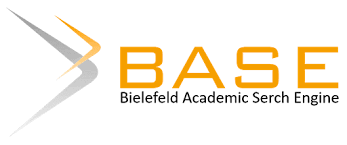EFISIENSI PENDIDIKAN BAHASA DI ERA DIGITAL: ANALISIS PENGGUNAAN ABREVIASI DALAM BERITA ILMU KOMUNIKASI TEMPO.CO
DOI:
https://doi.org/10.59672/widyadari.v26i2.5561Keywords:
Abbreviations, Online Journalism, Tempo.co, Language Efficiency, Journalistic StyleAbstract
The use of abbreviations in journalistic language is a linguistic strategy that has evolved alongside advancements in media and digital technology. In the context of online journalism, abbreviations not only serve to save space and time but also support the speed and efficiency of information delivery. This study aims to analyze the use of abbreviations in communication science news articles published on the Tempo.co website during January 2025. The research focuses on identifying the dominant types of abbreviations, their frequency, as well as their functions and purposes within the journalistic language style in digital media. This study employs a qualitative descriptive approach with content analysis methods applied to 40 news articles. Data were collected through documentation techniques involving identification and classification of abbreviation forms appearing in the news texts. The results indicate that acronyms are the most dominant type of abbreviation, found in 19 out of 23 cases (82.61%), followed by abbreviations with 4 cases (17.39%). Abbreviations were most frequently used in the Politics and Economy news categories, primarily to simplify the mention of institution names, positions, technical terms, countries, and political parties. The main function of using abbreviations is to support efficient information delivery, improve readability, and maintain clarity of meaning. Most of the abbreviations used are standardized and commonly recognized by the public. In conclusion, the use of abbreviations in Tempo.co online news reflects an adaptive effort to meet the demands of fast and concise digital communication, while reinforcing an efficient and communicative journalistic language style
Downloads
References
Adnan, M. S. (2019). Abreviasi Pada Berita Dalam Surat Kabar Jawa Pos. Belajar Bahasa: Jurnal Ilmiah Program Studi Pendidikan Bahasa Dan Sastra Indonesia, 4(2), 201-206.
Baryadi, I. P. (2022). Morfologi dalam ilmu bahasa. Sanata Dharma University Press.
Effendi, D. N. (2022). Hukum Pers dan Etika Jurnalistik di Era Digital (Vol. 1). UPPM universitas malahayati.
Eja, F. (2023). Abreviasi Nama-Nama Tempat Di Kota Padang (Tinjauan Morfologi) (Doctoral dissertation, Universitas Andalas).
Fahrurozi, F., Aprilia, D., Nuraeni, A. N., Sakinah, U., Rukmini, E., & Firmansyah, A. (2024). Persepsi Netizen terhadap Penggunaan Abreviasi di Twitter pada Unggahan
Ira, P. A., Utami, S., & Sugiyanto, I. (2024). Ragam Abreviasi Pada Rubrik Metropolitan Surat Kabar Digital Memorandum. Caraka: Jurnal Ilmu Kebahasaan, Kesastraan, dan Pembelajarannya, 11(1), 433-440.
Khoirunnisa, K., Chamalah, E., & Azizah, A. (2022). Ragam Abreviasi Dalam Kolom Berita Pandemi Koran Digital Jawa Pos Edisi Agustus-November 2020. Prosiding Konstelasi Ilmiah Mahasiswa Unissula (KIMU) Klaster Humanoira.
Krippendorff, K. (2018). Content Analysis: An Introduction to Its Methodology Fourth Edition Content Analysis(Fourth). California: SAGE Publications.
nur Baiti, M. F., & Kustriyono, E. (2024). Bahasa Gaul Dan Abreviasi Pada Deproposal Tempat Jual Beli Online Aplikasi Facebook Dan Implikasinya Terhadap Pembelajaran Teks Iklan Kelas VIII SMP. Prosiding Konferensi Ilmiah Pendidikan, 5, 288-302.
Ridwan, M. (2017). Pembentukan Abreviasi dalam Media Cetak. Sawerigading, 18(3), 393-405.
Romli, A. S. M. (2018). Jurnalistik online: Panduan mengelola media online. Nuansa Cendekia.
Sahputra, D. (2022). Komunikasi moderat dalam bahasa jurnalistik. Persatuan Wartawan Indonesia Pusat.
Sefrianto, R., & Manaf, N. A. (2024). Abreviasi dalam Berita Utama Surat Kabar Harian Singgalang Periode Juli-Desember 2023. Persona: Kajian Bahasa dan Sastra, 3(3), 562-575.
Sulistia, M. (2024). Penggunaan Eufemisme dalam Tajuk Rencana Surat Kabar Edisi Oktober 2023 (Doctoral dissertation, Universitas Jambi).
Susanto, D., & Jailani, M. S. (2023). Teknik Pemeriksaan Keabsahan Data Dalam Penelitian Ilmiah. QOSIM: Jurnal Pendidikan, Sosial & Humaniora, 1(1), 53-61.
Waruwu, M. (2023). Pendekatan penelitian pendidikan: metode penelitian kualitatif, metode penelitian kuantitatif dan metode penelitian kombinasi (Mixed Method). Jurnal Pendidikan Tambusai, 7(1), 2896-2910.
Downloads
Published
How to Cite
Issue
Section
License
Copyright (c) 2025 Widyadari

This work is licensed under a Creative Commons Attribution-NonCommercial-ShareAlike 4.0 International License.
Hak cipta mencakup hak eksklusif untuk mereproduksi dan mengirimkan artikel ini dalam semua bentuk dan media, termasuk mencetak ulang, memotret, mikrofilm dan reproduksi serupa lainnya, serta terjemahannya. Reproduksi dari bagian manapun dari jurnal ini, penyimpanannya di database dan transmisinya dengan bentuk atau media apa pun, seperti salinan elektronik, elektrostatik dan mekanis, fotokopi, rekaman, media magnetik, dan lain-lain, akan diizinkan hanya dengan izin tertulis dari penerbit jurnal.






1_(1).jpg)











